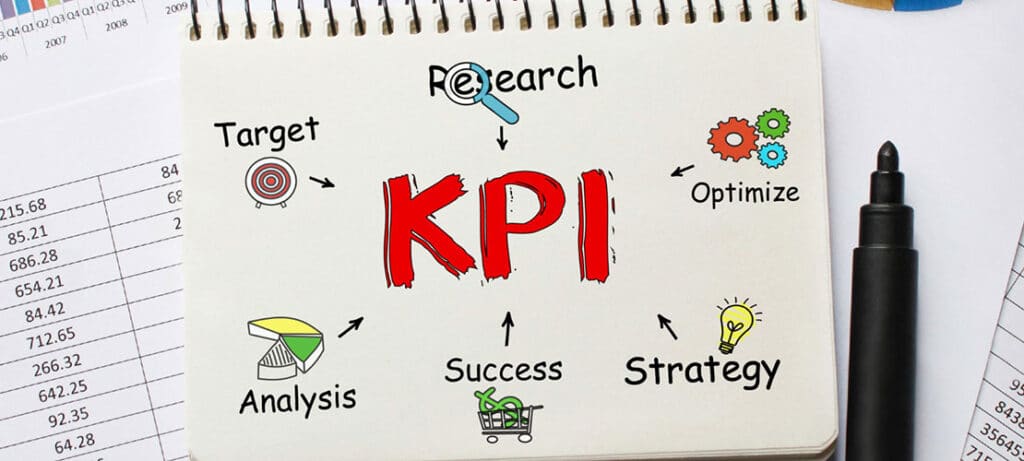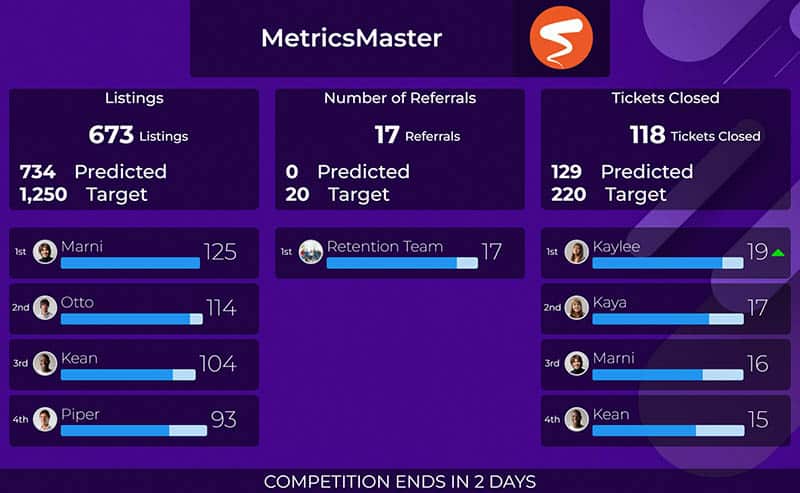Traditional Sales KPIs
Sales has changed. But strangely, the KPIs used to measure sales performance haven’t. Teams still rely on metrics like “calls made,” “emails sent,” or “monthly revenue” without understanding whether these actually reflect effort, buyer experience, or progress.
Here’s the hard truth: traditional sales KPIs don’t work anymore—and the longer you rely on them, the more you’ll fall behind.
What Are Traditional Sales KPIs?
These are the standard metrics most teams have used for decades:
- Number of cold calls: This metric measures the volume of outbound calls made by sales reps to potential customers. While it indicates activity levels, it doesn’t account for the quality of conversations or their impact on sales opportunities.
- Demos booked: Tracking the number of product demonstrations scheduled can show sales rep activity. However, without considering the conversion rate from demos to closed deals, it may not accurately reflect sales effectiveness or customer interest. Additionally, understanding the quote-to-close ratio is crucial as it compares the number of deals closed to the total quotes sent out, providing deeper insights into sales performance.
- Emails sent: A common metric that tracks the quantity of emails dispatched to prospects. High numbers might suggest proactive outreach, but it fails to measure engagement or the success of email campaigns in generating leads.
- Revenue closed: This metric focuses on the total sales revenue generated within a specific period. While crucial for assessing financial performance, it often overlooks factors like customer lifetime value or sales cycle length.
- Quota attainment: Quota attainment measures how well sales reps meet their sales targets. However, it can drive short-term thinking and pressure reps to prioritize quick wins over sustainable customer relationships.
- Number of deals in pipeline: This metric tracks the total number of potential sales opportunities. While it provides an overview of sales pipeline health, it doesn’t account for the quality or likelihood of deals closing successfully.
They’re straightforward, easy to track, and… dangerously outdated. These metrics often fail to capture the nuances of modern sales strategies, leaving sales teams and sales managers with incomplete insights into their sales team’s ability to achieve broader business goals.
Common Traditional KPIs Still in Use

Even high-performing teams often rely on outdated KPIs like:
- Activities per day: This KPI measures the daily sales activities, such as calls and emails, completed by a sales rep. While it shows workload, it doesn’t provide insights into the effectiveness of these activities. High numbers might suggest a busy sales team, but without context, they fail to indicate whether these efforts translate into meaningful sales opportunities or customer engagements.
- Meetings per week: Tracking the number of weekly meetings can indicate a sales rep’s proactive engagement with prospects. However, it doesn’t measure the quality or outcomes of these meetings. Without understanding the results, this metric can mislead assessments of a sales team’s performance.
- Total deals created: This KPI tracks new deals added to the sales pipeline. While it reflects a team’s ability to generate potential sales opportunities, it doesn’t account for the quality or value of these deals. Analyzing the average deal amount can provide better insights into the sales cycle and overall deal progression. A high number of deals might seem promising, but if they’re not progressing or converting, the metric falls short.
- Closed-won count: This tracks the number of deals successfully closed. Although crucial for measuring success, it doesn’t offer insights into the factors contributing to these wins or challenges faced. Calculating the value of each won sale helps in understanding the true impact on monthly sales bookings. Understanding these factors helps refine sales strategies and improve future performance.
- Win/loss ratio: This compares deals won to those lost, providing a basic success rate measure. However, it lacks depth in explaining why deals were lost or won, making it challenging to identify improvement areas.
These metrics don’t explain why performance is high or low—they only show what happened. By focusing solely on these traditional KPIs, sales managers and teams miss valuable insights that could drive more effective sales strategies, improve performance, and increase company revenue.
The Problem With Legacy Metrics
Traditional KPIs, like the number of calls made or emails sent, often fail to reflect real buyer behavior and lag behind actual performance trends. These metrics prioritize busywork over smart work, leading sales reps to chase arbitrary targets rather than understanding and addressing customer needs by comparing current performance against historical trends. Consequently, they overlook what sales reps truly need to improve, providing sales managers with insufficient data for effective coaching.
In today’s rapidly changing sales landscape, relying on these outdated metrics can hinder sales team performance and prevent businesses from achieving broader goals. Instead, sales leaders should focus on metrics that capture customer engagement quality and sales strategy effectiveness, ensuring sales tactics align with modern buyer behaviors and preferences to help sales teams close deals more efficiently.
Average Purchase Value is Not Enough
Average purchase value has long been a staple metric for sales teams, providing a snapshot of the revenue generated per transaction. While it’s a useful indicator of sales performance, relying solely on average purchase value can be misleading. This metric doesn’t account for other crucial factors such as customer lifetime value and retention rates, which are essential for understanding the true health of your sales efforts.
To gain a comprehensive view of sales performance, sales teams should consider a combination of metrics. Customer lifetime value, for instance, offers insights into the long-term revenue potential of each customer, while retention rates highlight the effectiveness of your customer relationship management strategies. By tracking these alongside average purchase value, sales teams can identify areas for improvement and optimize their sales strategies to drive growth and revenue.Effective sales KPIs should be specific, measurable, achievable, relevant, and time-bound (SMART). Regularly reviewing and adjusting these KPIs ensures they remain relevant and effective in achieving broader business goals. Additionally, using data visualization tools like sales dashboards can help track and analyze these metrics, making it easier to make data-driven decisions.
By taking a holistic approach to sales KPIs, sales teams can gain deeper insights into their performance, enabling them to make informed decisions that drive growth and revenue. This comprehensive understanding is crucial for aligning sales strategies with broader business goals and ensuring long-term success.
Shift in Buyer Behavior
Modern buyers are self-educated, digitally native, and often steer clear of sales reps until absolutely necessary. This shift means that if your sales metrics are still heavily focused on call volume, new leads, and existing customers, you’re measuring success in a way that doesn’t align with how customers prefer to engage.
Today’s buyers conduct extensive online research, compare options, and make informed decisions long before speaking to a sales rep. Therefore, sales teams need to prioritize metrics that reflect engagement quality, such as lead conversion rate and customer relationship management, rather than outdated call-heavy KPIs.
From Outputs to Outcomes
In today’s sales environment, simply making 100 calls daily is ineffective without genuine engagement. Instead, focus on outcomes like conversion rates, engagement quality, sales cycle velocity, and average revenue per customer. These metrics offer a clearer view of a sales team’s ability to meet business goals, reflecting real buyer interactions and effective sales strategies. By prioritizing these outcomes, sales managers gain insights, track progress, and make data-driven decisions to enhance sales performance and boost company revenue.
Outcomes-based metrics provide insights into customer relationships and sales reps’ effectiveness. Shifting from activity volume to meaningful engagement aligns sales tactics with modern buyer behaviors, leading to increased sales growth and improved customer lifetime value. Emphasizing these outcomes ensures alignment with broader business goals, resulting in more predictable revenue and a more efficient sales cycle.

Too Much Emphasis on Quota
Quota obsession can harm sales teams by encouraging short-term thinking. Reps may focus on quick wins over lasting customer relationships, leading to burnout from chasing high targets instead of selecting the right sales KPIs. This pressure can also promote gaming behavior, where reps manipulate metrics or prioritize low-value deals to meet quotas. Such a culture is unsustainable, damaging team dynamics and hindering genuine growth.
Sales managers should focus on holistic performance metrics over rigid quotas. By valuing customer engagement, process quality, and collaboration, and by setting clear KPI targets, sales leaders can foster a culture of long-term success, enhancing team performance and aligning with broader business goals.
Activity-Based KPIs and Their Limitations
Calls made ≠ conversations had. Emails sent ≠ emails read. We need context, not just counts. Traditional sales KPIs often emphasize quantity over quality, leading sales teams to focus on sheer activity levels rather than meaningful engagement. This approach overlooks the importance of understanding customer interactions and fails to provide insights into the effectiveness of sales strategies, such as average sales.
For sales managers aiming to enhance team performance and achieve business goals, it is crucial to shift the focus from activity-based metrics to those that reflect the quality of engagement and buyer behavior. By doing so, sales strategies can be better aligned with modern buyer preferences, leading to improved sales performance and increased revenue.
Additionally, incorporating metrics like sales target attainment helps in evaluating how well sales teams meet their quotas and identifying underperforming representatives.
The Data Lag Problem
Most KPIs are lagging indicators, meaning they only provide insights after the fact. By the time sales managers realize a sales rep is underperforming compared to previous periods, it’s often too late to address the issue within the current month. This delay in recognizing performance problems can hinder immediate corrective actions, leading to missed sales targets and opportunities for improvement.
Relying solely on lagging indicators prevents sales teams from being proactive. To enhance sales team performance, it’s crucial to incorporate leading indicators that offer real-time insights into current performance, enabling timely interventions and adjustments to sales strategies for achieving business goals.
Gaming the System
Sales reps often learn to manipulate metrics to meet targets without truly adding value to the sales process. This can include logging fake calls, booking unqualified meetings, over-reporting activity, or failing to utilize diverse data sources. Such practices distort performance insights, making it challenging for sales managers to accurately assess a sales team’s ability to meet broader business goals.
Furthermore, this behavior can demotivate honest performers who genuinely strive to improve sales performance. To address this issue, sales leaders should focus on metrics that prioritize engagement quality and align with modern sales strategies, ensuring that efforts lead to meaningful customer relationships and increased sales revenue.
Additionally, calculating customer acquisition costs (CAC) should include all sales and marketing expenses, such as salaries and overhead, to ensure an accurate measurement for budgeting and profitability analysis.
Lack of Context in Traditional KPIs
If a sales rep closes less revenue, it could be due to poor targeting, where the sales team is not focusing on the right customer segments or potential buyers. Alternatively, the issue might stem from bad leads, where the sales opportunities presented to the sales rep lack quality or genuine interest, resulting in fewer closed deals.
Another possibility is a product fit issue, where the product or service offered does not align with the needs or preferences of the target audience. Traditional KPIs often fail to address these underlying factors, such as the average length of the sales cycle, leaving sales managers without the necessary insights to make informed adjustments to sales strategies.
Misaligned Incentives
When KPIs reward the wrong behaviors, reps do the wrong things. Metrics that encourage superficial activity rather than meaningful engagement can lead to a focus on quantity over quality, impacting both customer satisfaction and the number of customers acquired. This misalignment results in sales reps prioritizing activities that boost their numbers but don’t contribute to actual sales growth or customer satisfaction.
To ensure KPIs align with your ideal sales motion, it’s crucial to design metrics that reflect the true value of sales efforts. By emphasizing customer engagement, relationship building, and strategic sales opportunities, sales managers can focus on achieving sustainable success that aligns with broader business goals.
What Modern Sales Metrics Look Like
Modern metrics prioritize a comprehensive understanding of the sales process, focusing on key aspects such as buyer engagement, coaching effectiveness, pipeline velocity, rep development, and activity quality. By emphasizing these areas, including monthly recurring revenue, sales teams can gain deeper insights into customer interactions and the effectiveness of their sales strategies. This approach enables sales managers to tailor coaching and support to individual reps, fostering a culture of continuous improvement and learning.

In addition, these metrics help align sales efforts with broader business goals, ensuring that sales teams are not only meeting targets but also contributing to long-term growth and customer satisfaction. By prioritizing quality over quantity, modern metrics drive meaningful engagement and sustainable success, ultimately leading to improved sales performance and increased company revenue. By incorporating sales KPIs, such as sales per rep and using dashboards to track performance, sales managers can effectively measure and improve sales performance.
KPIs That Reflect Buyer Engagement
- Call connect rates
- Demo show-up %
- Time spent on proposal pages
These metrics indicate genuine buyer interest rather than just sales rep activity. Call connect rates reveal how often reps engage with potential customers, showcasing the effectiveness of outreach efforts in acquiring new customers. Demo show-up percentages highlight the appeal and value of product demonstrations, reflecting potential buyer commitment.
Time spent on proposal pages provides insights into buyer engagement with sales materials, indicating their level of interest and likelihood to proceed. By focusing on these metrics, sales teams can gain insight into buyer behavior, align sales strategies with customer needs, and enhance overall sales performance.
Data That Tracks Sales Behavior
Metrics like objection handling time, time spent on discovery, and follow-up rate allow sales managers to coach effectively. These metrics highlight sales reps’ strengths and areas for improvement, enabling tailored coaching that enhances sales performance and customer engagements by identifying the right kpis to track.
They also reveal customer behavior patterns, helping sales teams refine strategies to better align with buyer preferences. By understanding objection handling or discovery call durations, managers can make data-driven decisions to boost team performance, ensuring sales efforts align with broader business goals and support sustained revenue growth by setting clear sales goals.
How Sales Managers Are Reframing KPIs
Modern sales organizations prioritize metrics that reflect growth, customer experience, and learning velocity, moving beyond traditional focuses on revenue and call volume. Growth metrics provide insights into a sales team’s ability to generate sustainable sales opportunities, while understanding the average sales cycle helps identify inefficiencies and drive improvements among sales reps.
Learning velocity emphasizes continuous improvement, encouraging sales reps to develop their skills and adapt to changing market conditions. By focusing on these areas, sales managers can drive a culture of innovation and adaptability, ultimately leading to enhanced sales performance and long-term success.
Collaboration between sales and marketing teams is crucial for improving lead conversion rates and measuring campaign efficiency. Marketing teams play a critical role in generating quality leads and optimizing costs associated with lead generation, ultimately aiming to enhance overall sales performance.
Engagement Metrics That Matter
Engagement metrics are crucial for understanding the quality of interactions between sales reps and potential buyers. The percentage of buyers who engage back provides insight into the effectiveness of outreach efforts, indicating genuine interest and potential for conversion. Time to first reply measures the responsiveness of sales reps, reflecting their ability to capture and maintain buyer attention.
Additionally, the average sales cycle length highlights the timeframe from initial customer interaction to the closing of a sale, showcasing how efficiently sales reps are moving prospects through the pipeline. These metrics focus on momentum rather than mere movement, providing a clearer picture of sales effectiveness and customer engagement.
Analyzing these metrics alongside the number of monthly calls made by sales representatives helps identify effective strategies that lead to increased sales performance. The time between stages in the sales process highlights the momentum of deals, showcasing how efficiently sales reps are moving prospects through the pipeline. These metrics focus on momentum rather than mere movement, providing a clearer picture of sales effectiveness and customer engagement.
Why Personalization Outperforms Volume
A personalized outreach that leads to a reply beats 100 ignored emails. New KPIs focus on relevance, not repetition, and consider the impact of annual subscriptions on long-term financial stability. By prioritizing the quality of interactions over sheer volume, sales teams can better align their strategies with customer preferences, fostering meaningful engagements and long-term relationships. This shift in focus encourages sales reps to tailor their approaches, ensuring that each interaction is valuable and impactful.
Incorporating relevance-driven KPIs into sales strategies allows sales managers to gain deeper insights into buyer behavior and engagement. By emphasizing personalization and understanding the importance of recurring revenue, sales teams can enhance their performance, drive sustainable growth, and ultimately increase sales revenue.
Introducing Micro-KPIs
Micro-KPIs track essential sales activities, providing sales teams with granular insights into their daily operations. Metrics such as follow-ups per deal, the use of custom messaging, and speed to discovery offer sales managers a clearer view of sales reps’ effectiveness and help in evaluating the potential sales opportunity of each lead. By focusing on these detailed activities, sales managers can provide more precise coaching, helping sales reps refine their sales strategies and improve their sales performance.

These micro-KPIs enable sales teams to celebrate daily wins and foster a culture of continuous improvement. By emphasizing the quality of interactions over sheer volume, sales managers can align sales efforts with broader business goals, ultimately enhancing customer relationships and increasing company revenue by analyzing success rates of various sales activities.
Gamification as a KPI Booster
Turn metrics into motivation by leveraging tools like Spinify, which allow sales managers to reward quality behavior and highlight consistent effort. By using competitions to reinforce smart selling, sales teams can be encouraged to focus on meaningful activities that drive sales performance and align with business goals, such as tracking monthly sales bookings. This approach not only enhances team morale but also fosters a culture of continuous improvement, ensuring that sales reps remain motivated and engaged.
Incorporating gamification into your sales strategy can transform traditional KPIs into dynamic motivators. By celebrating achievements in areas such as lead conversion rates and customer engagement, sales teams are inspired to refine their strategies and improve overall performance, leading to increasing revenue. This shift from quantity to quality helps align sales efforts with broader business goals, ultimately leading to increased sales revenue and improved customer relationships.
Leaderboards That Reinforce What Matters
Display:
- Fastest lead response: Highlighting the quickest responders encourages prompt engagement with potential customers, ensuring that sales teams can capitalize on new sales opportunities swiftly.
- Best follow-up rates: Recognizing those who consistently follow up with prospects fosters a culture of persistence and dedication, essential for nurturing customer relationships and increasing conversion rates and improving the average profit margin.
- Cleanest pipeline: Rewarding those who maintain an organized and up-to-date sales pipeline ensures that sales data is accurate and reliable, aiding in strategic decision-making and enhancing sales performance and total revenue.
These metrics emphasize quality interactions and strategic engagement, not just revenue rankings.
KPIs That Drive Culture, Not Just Results
Use KPIs to:
- Recognize teamwork: By highlighting collaborative efforts, KPIs can foster a culture of unity and mutual support within sales teams. This not only improves team dynamics but also enhances overall sales performance, as team members work together towards common goals.
- Reward learning: KPIs can be designed to encourage continuous learning and skill development among sales reps. By focusing on metrics that track personal growth and knowledge acquisition, sales managers can motivate reps to enhance their capabilities, leading to more effective sales strategies and improved customer engagement.
- Encourage consistency: Consistent performance is key to achieving long-term success. KPIs that emphasize regular, quality engagement help sales teams maintain steady progress, ensuring that sales efforts align with broader business goals. Metrics shape mindset.
Aligning KPIs With Business Goals
Modern sales metrics should align with a company’s strategic priorities to ensure that sales efforts contribute to broader business goals. For organizations focused on retention, tracking the Net Promoter Score (NPS) of sales reps can provide insights into customer satisfaction and loyalty, highlighting areas for improvement. Companies aiming for growth should monitor the quality of new deals to ensure they are targeting the right opportunities that drive sustainable revenue. For businesses prioritizing expansion, tracking upsell velocity can reveal how effectively sales teams are leveraging existing customer relationships to increase sales revenue and enhance customer lifetime value.
Visualizing KPIs With Sales Dashboards
Sales dashboards are a powerful tool for visualizing and tracking sales KPIs, providing a centralized platform for sales teams to monitor their performance. These dashboards make it easier to identify areas for improvement and optimize sales strategies by offering real-time insights into key metrics.
An effective sales dashboard should include a combination of metrics such as sales revenue, customer acquisition cost, and customer lifetime value. This comprehensive approach ensures that sales teams have a well-rounded understanding of their performance, allowing them to make data-driven decisions that drive growth and revenue.

Customization is another critical feature of sales dashboards. Sales teams should be able to tailor their dashboards to meet their specific needs and goals, ensuring that the most relevant data is always at their fingertips. This flexibility allows teams to focus on the metrics that matter most to their unique sales strategies and business goals.
By leveraging sales dashboards, sales teams can identify trends and patterns in their sales data, enabling them to make more informed decisions. This real-time visibility into sales performance helps teams to stay agile, quickly adapting their strategies to capitalize on new opportunities and address challenges.
Incorporating sales dashboards into your sales process can take your performance to the next level. By providing a clear, visual representation of key metrics, these tools help sales teams to stay focused on their goals, drive business growth, and enhance customer relationships.
Spinify’s Approach to Sales KPIs
Spinify revolutionizes the way sales teams engage with KPIs by offering gamified visibility, micro-metrics tracking, and custom leaderboards. This innovative approach is tailored for modern sellers and buyers, ensuring that sales strategies align with current market demands. By incorporating elements of gamification, Spinify motivates sales reps to focus on meaningful activities that drive performance and align with broader business goals.

With Spinify, sales managers can gain deeper insights into team performance, fostering a culture of continuous improvement and learning. The platform’s emphasis on micro-metrics allows for precise tracking of sales activities, enabling managers to provide targeted coaching and support. By highlighting key performance indicators that matter, Spinify helps sales teams achieve sustainable growth and enhance customer relationships.
Using KPIs to Reward the Right Behavior
Celebrate the reps who:
- Improve their numbers: Recognize sales reps who consistently enhance their performance, showcasing their dedication to achieving sales targets and driving company revenue. By highlighting these achievements, sales managers can motivate other team members to strive for similar improvements, fostering a culture of continuous growth and success.
- Maintain clean CRM records: Reward those who diligently keep customer relationship management systems accurate and up-to-date. This attention to detail ensures reliable sales data, aiding in strategic decision-making and enhancing the overall sales process. Accurate CRM records also facilitate better customer relationships, leading to increased sales opportunities and improved sales team performance.
- Demonstrate learning and growth: Acknowledge reps who actively seek to expand their skills and knowledge, contributing to their personal development and the team’s success. By valuing learning, sales managers can encourage a culture of innovation and adaptability, ensuring that sales strategies remain effective and aligned with broader business goals. This focus on growth not only boosts individual rep performance but also drives team collaboration and long-term sales growth.
Building KPIs Around Learning
Make improvement visible by emphasizing skill acquisition alongside results. Modern sales organizations understand that nurturing sales reps is crucial for long-term success. By focusing on developing skills, sales teams can foster a culture of continuous growth, ensuring that sales strategies remain effective and aligned with evolving market demands. This approach not only enhances individual performance but also boosts team collaboration and innovation.
Rewarding skill acquisition over mere results helps prevent burnout and promotes a healthier work environment. Sales managers should celebrate reps who actively seek to expand their knowledge and abilities, as this drives personal development and contributes to broader business goals.
Steps to Transition From Legacy KPIs
Transitioning from legacy KPIs to modern, data-driven metrics requires a strategic approach. Begin by auditing current metrics to identify those that lack relevance or fail to capture meaningful insights. Engaging sales reps in the redesign process ensures that new KPIs are practical and reflective of real sales activities. Once designed, pilot these KPIs within small teams to gather feedback and refine the approach. Gradually roll out the new metrics across the organization, providing coaching and support to ensure smooth adoption.
Throughout the transition, consistently track the adoption of new KPIs and remain open to adjustments. This iterative process allows sales managers to refine metrics based on real-world feedback, ensuring alignment with sales strategies and broader business goals. By focusing on engagement quality and sales process effectiveness, the transition from legacy KPIs can lead to improved sales performance and a more motivated sales team. This strategic shift not only enhances sales team performance but also aligns with the evolving demands of modern buyers.
Common Pitfalls to Avoid
When implementing sales KPIs, it’s crucial to avoid tracking too many metrics, as this can overwhelm sales reps and dilute focus. Instead, prioritize a few key performance indicators that align with business goals and reflect meaningful sales activities. Additionally, ignoring rep input can lead to disengagement and resistance to new KPIs. Involve sales reps in the process to ensure buy-in and relevance.
Another common mistake is retaining outdated metrics “just in case,” which can clutter your data and obscure valuable insights. Ensure that all metrics serve a clear purpose and are aligned with current sales strategies. Failing to explain the “why” behind KPIs can also hinder adoption. Clearly communicate the rationale and benefits of each KPI to foster understanding and commitment among sales teams.
Questions to Audit Your Current KPIs
When auditing your KPI’s, ensure to ask yourself the following questions:
- Do these measure quality or just quantity?
- Can reps control these outcomes?
- Do these support our buyer journey?
- Are we coaching to these metrics?
KPIs Built for the Future
The future of sales success isn’t in doing more—it’s in doing better. Traditional sales KPIs weren’t designed for modern workflows, remote teams, or digitally-empowered buyers.
It’s time to evolve.
With Spinify, you can ditch the outdated and embrace dynamic, data-powered KPIs that motivate, inform, and transform your sales culture.
🎯 Want to see how Spinify can help modernize your sales metrics? Book a Free Demo Today and future-proof your performance.




